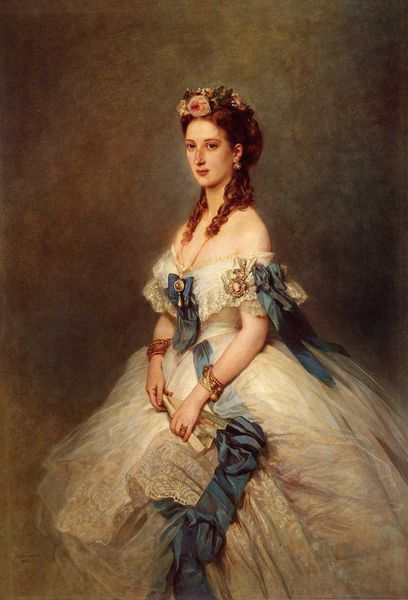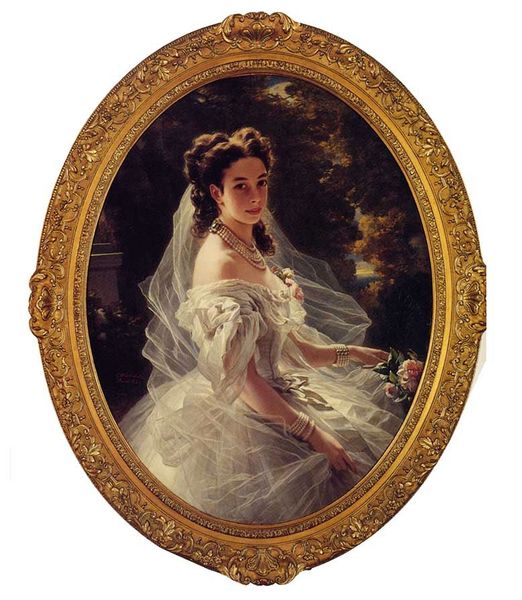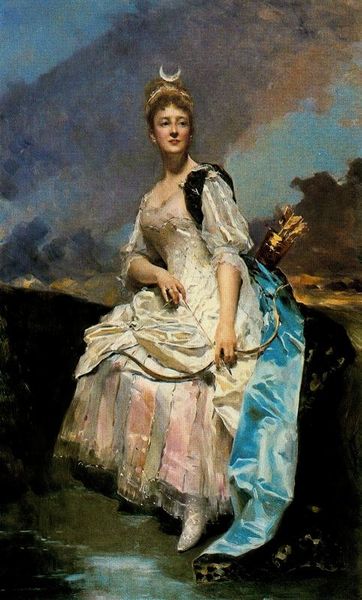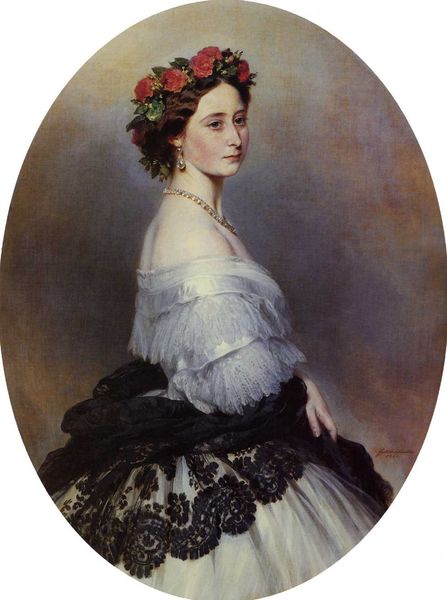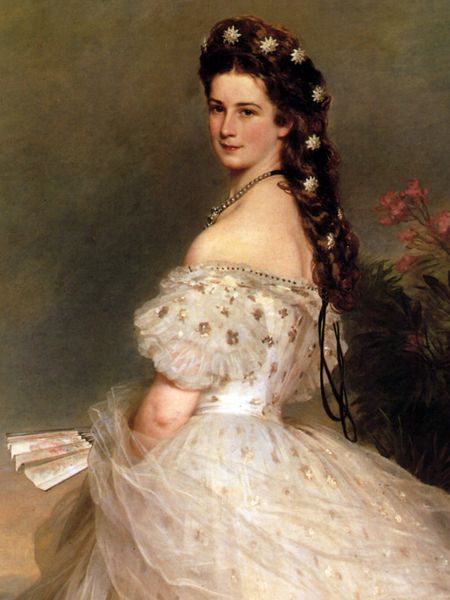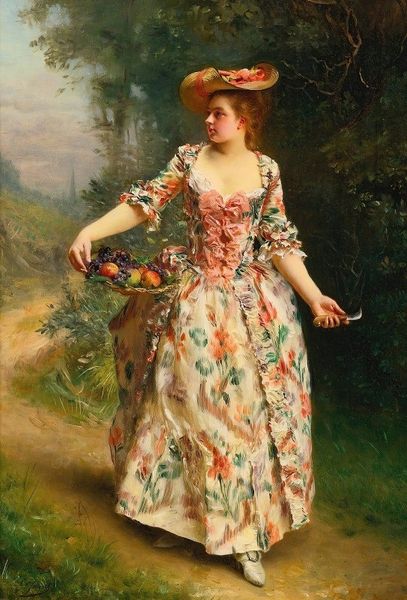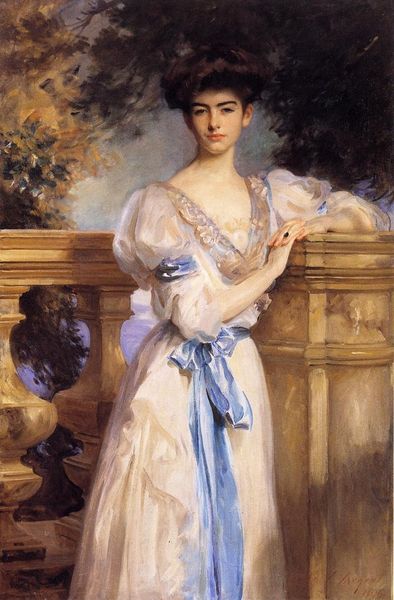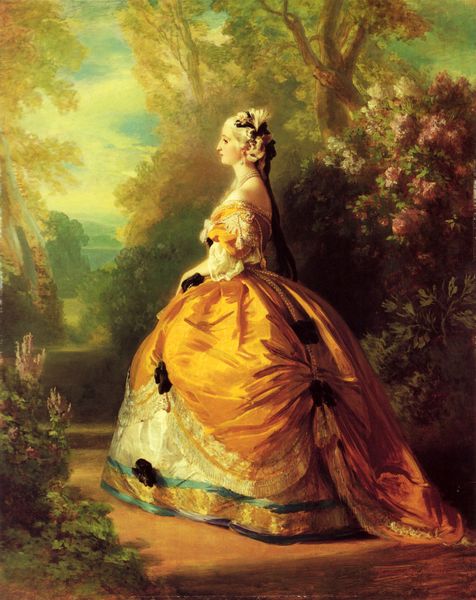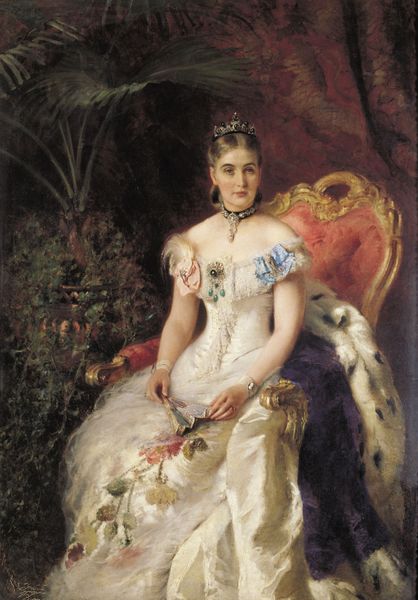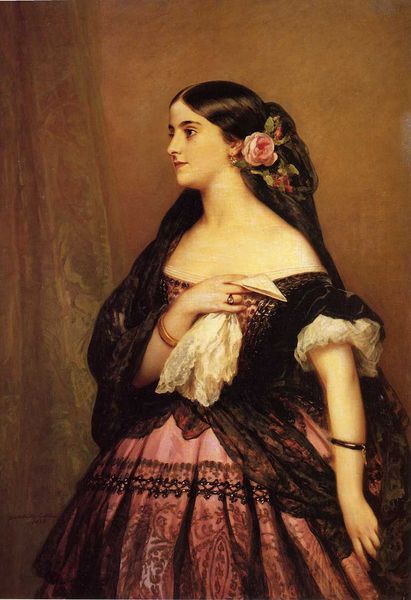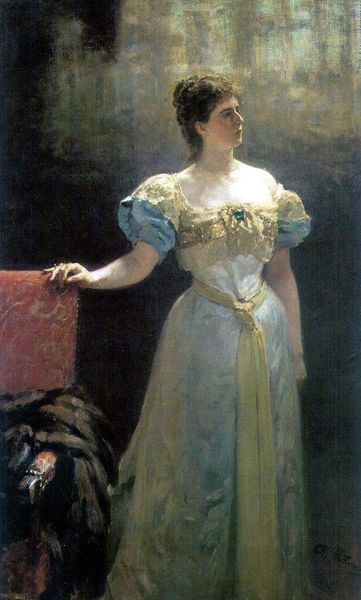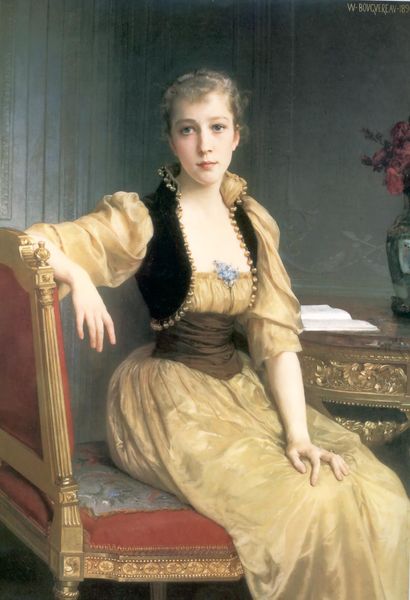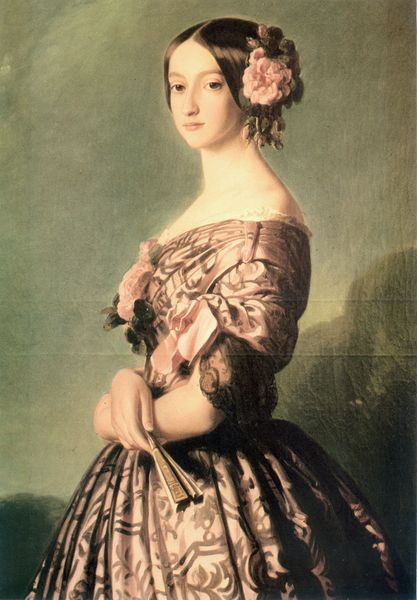
Copyright: Public domain
Editor: Here we have Franz Xaver Winterhalter’s oil portrait of Princess Elizabeth Esperovna Belosselsky, created in 1859. She seems like a fairy tale character. I'm drawn to the dreamy landscape in the background, contrasting with her very fashionable dress. What aspects of this piece strike you the most? Curator: Isn’t she radiant? For me, Winterhalter always balances idealization with just a hint of knowing the sitter, their personality. Think about the era: The Romantic period was obsessed with beauty, and Winterhalter was its master chronicler. Beyond the stunning gown, I am fascinated by how he situates her in nature—a theatrical backdrop that seems to breathe. Is she powerful, or poised at the edge of an unseen, changing world? Editor: I love the way you put that—"theatrical backdrop"! The lighting seems to play with both those ideas. Is it a bit…staged? Almost like she's performing. Curator: Absolutely. Court portraiture served the interests of both subject and the monarch; I bet Winterhalter gave her power here, even if subtly. That garden isn't just any garden, is it? The Belosselsky family had quite a estate in St. Petersburg and this romantic scene could highlight status and pedigree. Think, too, of that fan! A vital prop for a young woman, enabling all sorts of veiled communication and clandestine flirting! What secrets do you imagine she’s hiding behind it? Editor: That adds another dimension! The fan… now that you mention it, feels so purposeful, adding to her presence. Curator: Exactly! Winterhalter was so good at telling stories with his brush. Each choice contributes to an impression, isn’t it delightful? Editor: I'll never look at a fan the same way again. Thank you for opening up a world beyond just the pretty dress!
Comments
No comments
Be the first to comment and join the conversation on the ultimate creative platform.
